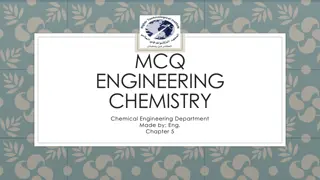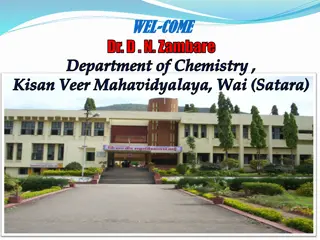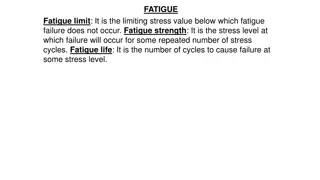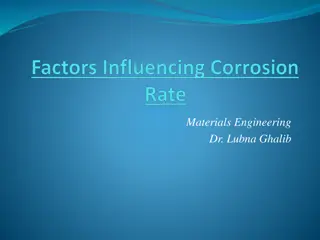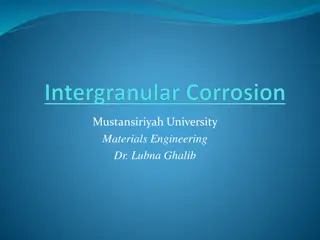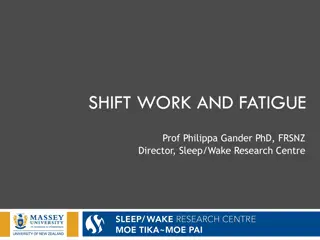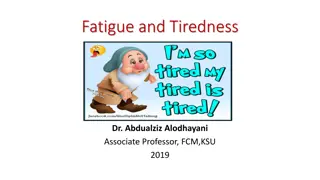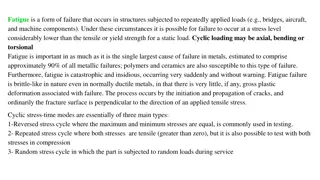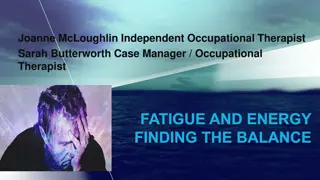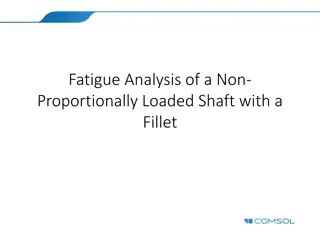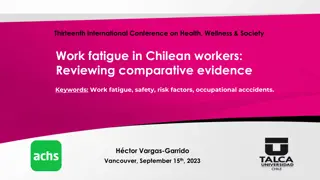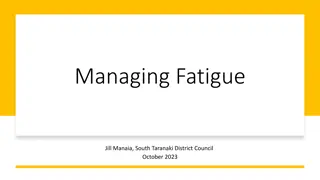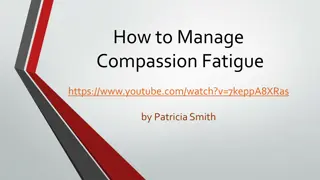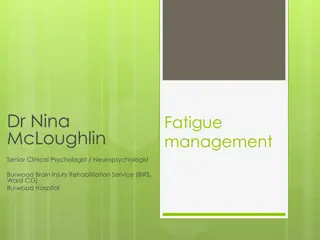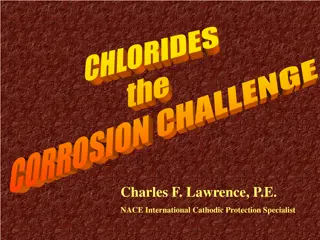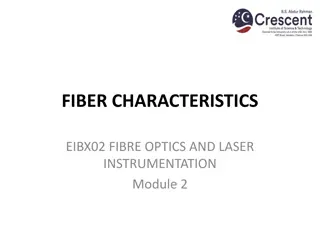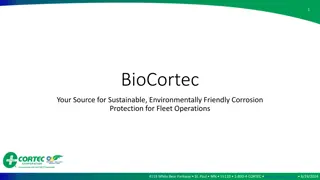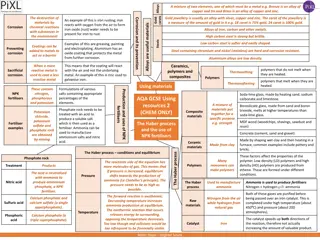Understanding Stress Corrosion Cracking and Corrosion Fatigue in Materials Engineering
Stress Corrosion Cracking (SCC) is a type of corrosion where the metal gets cracked due to the presence of a corrosion medium and tensile stress conditions. Factors influencing SCC include environmental composition, stress, metal composition, and temperature. Prevention methods involve selecting suitable materials, stress-relief annealing, and neutralizing the environment. Corrosion Fatigue is a special case caused by cyclic stress and corrosion, mostly affecting components like economizers and tubing. Prevention requires reducing corrosion using inhibitors and coatings.
- Materials Engineering
- Stress Corrosion Cracking
- Corrosion Fatigue
- Prevention Methods
- Environmental Factors
Download Presentation

Please find below an Image/Link to download the presentation.
The content on the website is provided AS IS for your information and personal use only. It may not be sold, licensed, or shared on other websites without obtaining consent from the author. Download presentation by click this link. If you encounter any issues during the download, it is possible that the publisher has removed the file from their server.
E N D
Presentation Transcript
Mustansiriyah University Materials Engineering Dr. Lubna Ghalib
Stress Corrosion Cracking: SCC in this type of corrosion loss due to corrosion effects is negligible, but the metal gets cracked after some time. It is a localized action caused by the presence of corrosion medium and the tensile stress conditions. The greater the stress on the material, the quicker it will crack. Examples: The most common examples of SCC are:- Season cracking of brass Caustic embrittlements of CS Chloride
Stress Corrosion Cracking: Examination showed: Cracks or brittle failures around rivet holes. Areas susceptible were cold worked by riveting (i.e., had high residual stresses). Whitish deposits in cracked regions were mostly caustic (i.e., sodium hydroxide from chemical treatment of boiler water). Small leaks at rivets would concentrate NaOH and even dry out to solid. SCC revealed by dye penetrates.
Stress Corrosion Cracking: Factors important in SCC: Environmental composition. Stress. Metal composition and microstructure. Temperature. e.g., brasses crack in NH3, not in Cl-; SSs crack in Cl-, not in NH3; SSs crack in caustic, not in H2SO4, HNO3, CH3COOH, etc. Prevention of SCC Choosing a material that is not susceptible to SCC in the service environment Residual stresses can be relieved by stress-relief annealing Similarly shot-peening or grit-blasting tend to introduce a surface compressive stress. Neutralizing the environment whenever possible, e.g. reducing chloride ion concentration.
Corrosion Fatigue: Corrosion fatigue is a special case of stress corrosion caused by the combined effects of cyclic stress and corrosion. Where damage occurs: Water touched components especially the economizer Steam touched tubing containing condensate during operation transients Welded connection, bends and attachments with high thermally induced force and bending movements. Locations Tube to header welds Scallop bar attachments U bend to drain line weld Riser and down comer tube
Corrosion Fatigue: Corrosion Fatigue in BoilerTubes Corrosion Fatigue of Welded Joints
Corrosion Fatigue: The Prevention of Corrosion Fatigue: To prevent corrosion fatigue, what you need is through a reduction of different things, which include: Reduction of corrosion through the use of inhibitors and coatings to stall time before corrosion fatigue cracking starts Reduction of fatigue by controlling and bringing down the pressure and vibration fluctuations Reduction of corrosion through the use of high performance alloys which are resistant to corrosion fatigue
Corrosion Fatigue: Stress Corrosion and Corrosion Fatigue are Not the Same Thing Stress corrosion is crack initiation and crack development due to a residual stress. This is different from corrosion fatigue and both entities should not be confused with one another. While corrosion fatigue features transgranular cracks, stress corrosion usually features intergranular cracks. In addition, corrosion fatigue can be prone to most materials (especially high strength alloys); stress corrosion is rarely seen in technical materials.
Hydrogen Damage: It is a general term which refers to mechanical damage of a metal caused by the presence of, or interaction with, hydrogen. Hydrogen damage may be classified into three distinct types:- 1) Hydrogen blistering. Hydrogen enters the lattice of a metal, diffuses to voids, creates high internal stresses blisters. Blistering may occur during exposure to: hydrocarbons; electroplating solutions; chemical process streams; pickling solutions; H-containing contaminants during welding; General corrosive environments.
Hydrogen Damage: Cross section of a carbon steel plate removed from a petroleum process stream showing a large hydrogen blister. Exposure time: 2 years. Schematic illustration showing the mechanism of hydrogen blistering.
Hydrogen Damage: 2) Hydrogen Embrittlements Similar to blistering hydrogen enters metal lattice but interaction with metal lattice different. High-strength (and more brittle) steels are susceptible. H-embrittlements different from SCC in nature of cracks. stress-corrosion cracks usually propagate anodically. 3) Decarburization and Hydrogen Attack High temperature process - C or carbide in steels can react with gaseous hydrogen C + 2H2 CH4 Note that the reaction can occur with atomic H in the metal lattice . . . C + 4H CH4 May crack the steel from high internal pressure. May cause loss of strength as C disappears.


